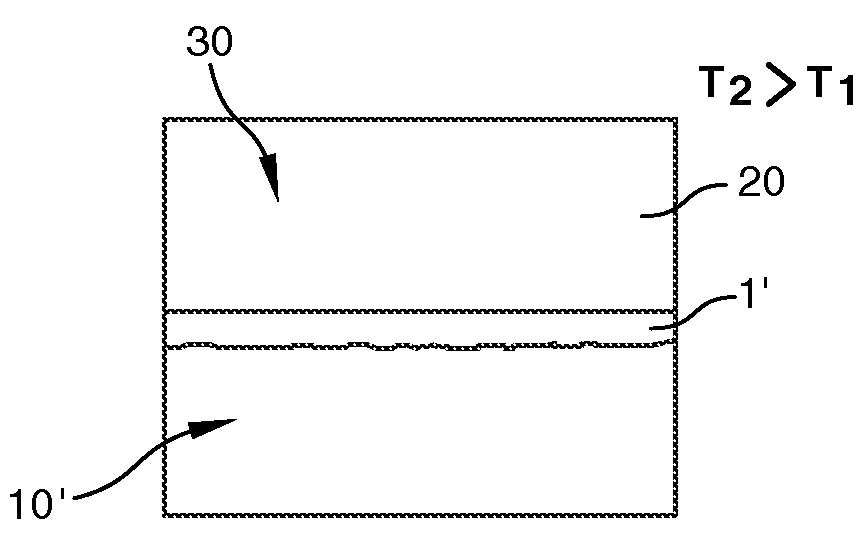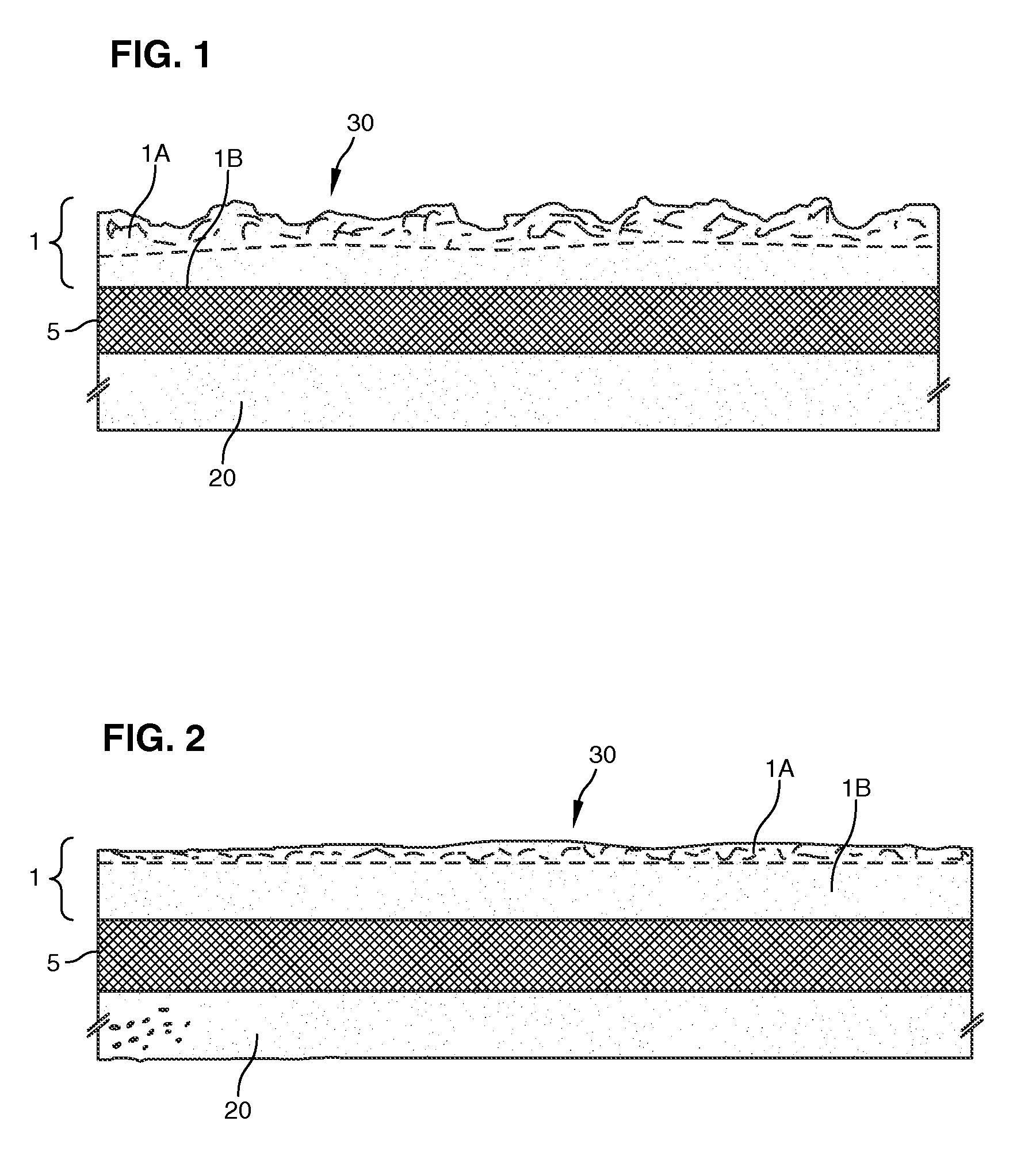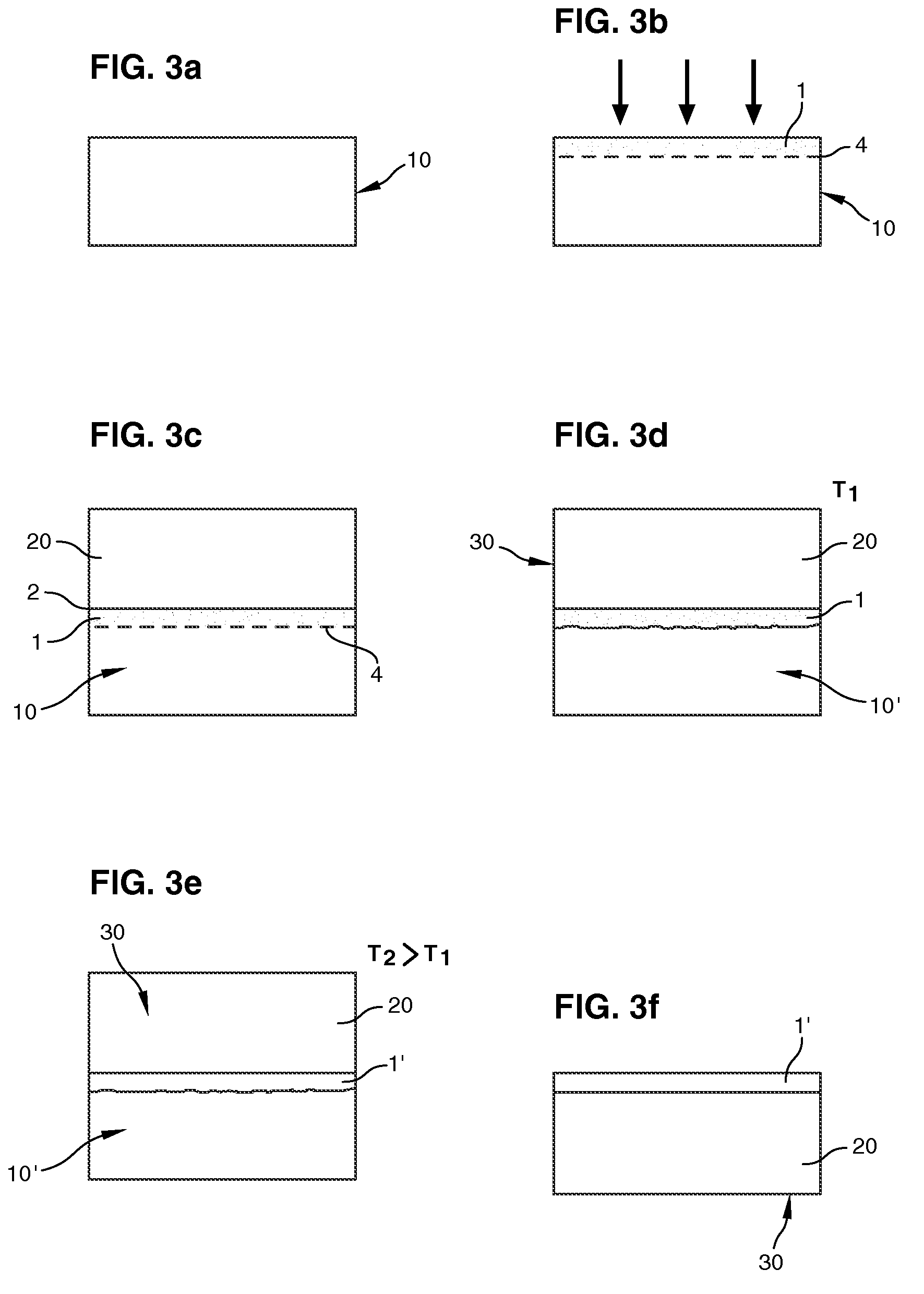Thermal treatment of a semiconductor layer
a technology of thermal treatment and semiconductor layer, which is applied in the direction of semiconductor/solid-state device manufacturing, basic electric elements, electric devices, etc., can solve the problems of defective zone having to be completely removed, costing and complex treatment steps, and affecting the crystalline quality so as to improve the crystalline quality and surface roughness of the transfer layer, improve the effect of surface roughness and good crystalline quality
- Summary
- Abstract
- Description
- Claims
- Application Information
AI Technical Summary
Benefits of technology
Problems solved by technology
Method used
Image
Examples
Embodiment Construction
[0029]The invention advantageously reduces the duration, economic cost and number of treatment devices required for transferring a layer using the SMART-CUT® process. In addition, the method provides a simple way to treat a transfer layer that is easy to incorporate into the SMART-CUT® process, and provides a way to use a recovery heat treatment for the transfer layer both in inert atmosphere and in oxidizing atmosphere without substantially altering the properties of the transfer layer. Further, the method according to the invention improves the crystalline quality of the transfer layer, and makes it possible to produce semiconductor on insulator structures with high crystalline quality and a working layer thickness that can be very thin. The method also reduces the quantity of material removed during treatment of the transfer layer using the SMART-CUT® process. Lastly, the method according to the invention makes it possible to utilize SiGe or Ge for fabricating a semiconductor on ...
PUM
 Login to View More
Login to View More Abstract
Description
Claims
Application Information
 Login to View More
Login to View More - R&D
- Intellectual Property
- Life Sciences
- Materials
- Tech Scout
- Unparalleled Data Quality
- Higher Quality Content
- 60% Fewer Hallucinations
Browse by: Latest US Patents, China's latest patents, Technical Efficacy Thesaurus, Application Domain, Technology Topic, Popular Technical Reports.
© 2025 PatSnap. All rights reserved.Legal|Privacy policy|Modern Slavery Act Transparency Statement|Sitemap|About US| Contact US: help@patsnap.com



